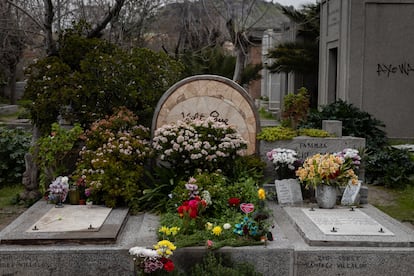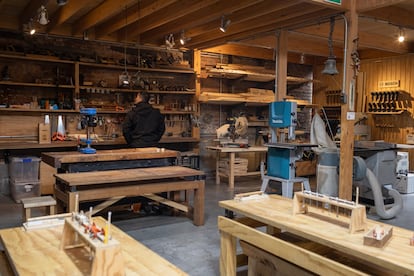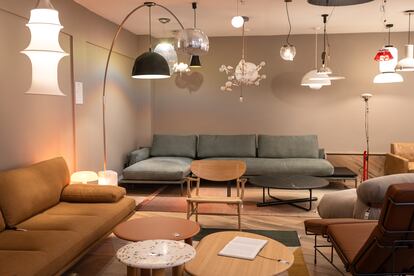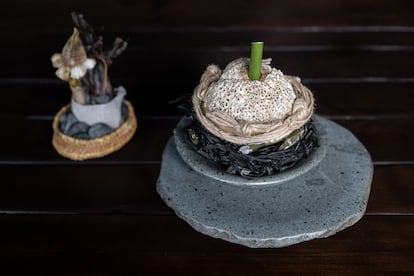For the past decade, Chile has been recognized every year as the best adventure tourism destination in South America, according to the World Travel Awardsawards that are granted annually by travel agencies and are classified as the Oscar tourism. Last July, however, the award surprised by choosing Santiago as the most attractive urban city to visit in the region, ousting Ecuador’s Quito, winner of the last four editions, except in 2021.
During the first half of 2024, more than 1.2 million foreign tourists landed at the capital’s airport – 38.2% more than last year – according to EFE, of which a little less than half spent a few days in the city. Brazilians, Argentines and Americans are the majority visitors. Journalist Rodrigo Guendelman, creator of Santiago Addicta platform for communicating the city’s attractions, highlights that the Chilean capital is a place that has to be discovered “by walking, with curiosity and knowing that it has many things to offer.” These “things to offer” are part of the journey on a grey August morning, but a timid spring, which peeks out in some cherry trees in bloom.
General Cemetery of Santiago
The General Cemetery of Santiago, located in the commune of Recoleta, has 86 hectares and 28 of them are considered a historical monument. There are more than two million graves in it and most of the country’s presidents and renowned figures such as Violeta Parra and Víctor Jara are buried under its soil. Bernardo O’Higgins, a military man and ruler, considered the father of the country for his role in the emancipation of Chile, founded the necropolis in 1821. During the tour, Guendelman comments that the cemetery is the most important heritage landmark in Santiago and “is one of the most beautiful in Latin America.” “And, why not say it, in the world,” he adds. Its importance, he points out, is both historical, sculptural, and scenic.

The cemetery is protected by more than 200 sculptures. There are pieces made of marble by Rebeca Matte (1875-1929), the first great Chilean sculptor, such as the one called ‘Ad Lucem’, which represents the expulsion of man and woman from paradise. Also on display are the works of the sculptor Samuel Román (1907-1990), National Art Prize winner in 1964. The mausoleums are true works of art. Many of them bear the signature of Tebaldo Brugnoli, an Italian architect who emigrated to Chile in 1875. The mausoleum of Claudio Vicuña, built in 1896, is striking. It has a staircase with two sculptures of tigers on each side and a Moorish-style structure. Quite a palace.
Around the tombs, 19th-century trees such as magnolias, araucarias, jacarandas, elms, cypresses and palm trees grow their roots, providing exceptional shade when Santiago reaches temperatures above 30 degrees in summer.

Yungay neighborhood
Close to the center of Santiago, the Yungay neighborhood – where President Gabriel Boric currently lives – was founded in the 19th century and was one of the first places in the capital to be urbanized. For many decades, its large mansions housed Chilean intellectuals and, after a decline, today it seeks to transform itself into an epicenter of culture and the arts.
At the intersection of Compañía de Jesús and Libertad streets is the Museo Taller, which connects four houses built at the beginning of the 20th century. The museum was created in 2018 by businessman and collector Francisco Dittborn, who designed it as a place to rescue the craft of carpentry, and later added a manual printing area. There are more than 800 tools on display to the public and, Marcela Bañados, curator and content director, says that it is “a hands-on museum,” where everyone looks, touches and uses each other. The focus, she says, is “to unite a collection of material culture with education.” In each room, the function of the tools is explained in order to “glorify the beauty of the processes.” After the visit, people can take home objects made by themselves in a neighborhood that “maintained the mixture of social classes,” says Bañados, which has been lost in many places in Santiago.

One of the most iconic places to eat in the sector is the Peluquería Francesa, founded in 1868. Located just steps from the Museo Taller, it is a place that tricks the brain into believing it has traveled back in time. At the entrance, the historic barber and haircut salon appears, attended by hairdressers dressed in white aprons. But two decades ago, Cristián Labaud, who belongs to the fifth generation of owners, added a restaurant, full of gadgets from times gone by. “Our barber shop is characterized because we have maintained the trade, offering classic haircuts, those that never go out of style,” says Labaud, who invites you to check out a menu that offers dishes such as chicken in wine, beef tongue in almond sauce and duck with orange.

El Golf neighborhood
One of the great attractions of the exclusive El Golf neighborhood, located in the Las Condes district, in the northeast of the capital, is its skyscrapers. It is an area where traditional, well-maintained old houses coexist with tall office buildings.
In a country where there is no design museum, according to Guendelman, the Interdesign store fulfills that function. Located on Isidora Goyenechea Street and opened in the 1980s by Eduardo Godoy, the large space allows you to see and buy pieces of contemporary European design, such as the Tolomeo lamp, created by Michele de Lucchi and Giancarlo Fassina, considered an icon of Italian design, or the Interdesign chair, created by Michele de Lucchi and Giancarlo Fassina, considered an icon of Italian design. The Red Blue Chairdesigned by Gerrit Rietveld in 1918.

Borago
In 2024, and for the second consecutive year, the Boragó restaurant, created by chef Rodolfo Guzmán, occupies the 29th position among the best restaurants in the world. Founded in 2007 and located in the commune of Vitacura, in the eastern sector of Santiago, its sober design contrasts with the spectacle of shapes and colors of its dishes.
Boragó works with seasonal menus and Guzmán’s hallmark is to rescue the flavors of the sea and soil of the South American country. “It is an essay on the Chilean territory,” explains the chef. “A restaurant that is based on the deepest part of our culture, which are the most ancient cooking methods that exist, based on imagination and on the momentum from Chilean territory,” he says. The culinary proposal is to use ingredients that were cooked with thousands of years ago.
The 14-course winter menu features grilled picoroco, a crustacean typical of the Chilean coast; a type of squid called cuttlefish tenderized in a mushroom cocktail; and Kra Kra, a typical fish from Easter Island that resembles a piranha. All dishes are accompanied by rainwater from the city of Valdivia in southern Chile and local wines. Chef Guzmán sums it up like this: “They are the original ingredients of Chile and they give us 300 possibilities.”

Subscribe here to the EL PAÍS Chile newsletter and receive all the key information on current events in the country.
#Santiago #Chile #recognized #urban #destination #South #America #shows #feathers
